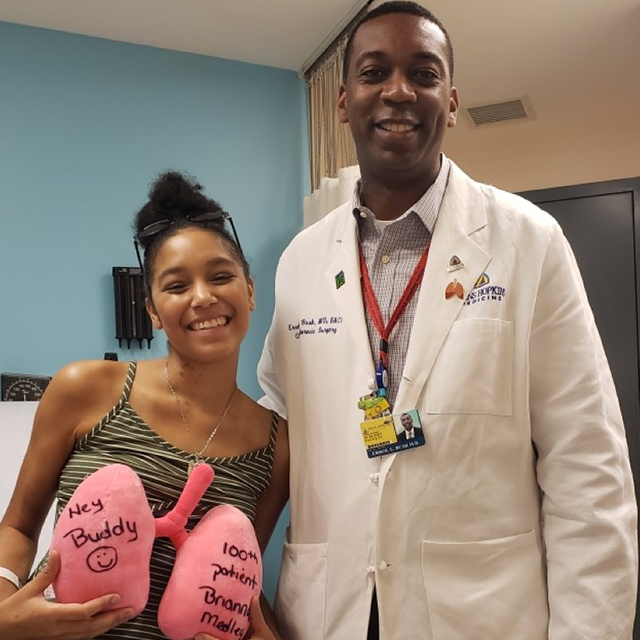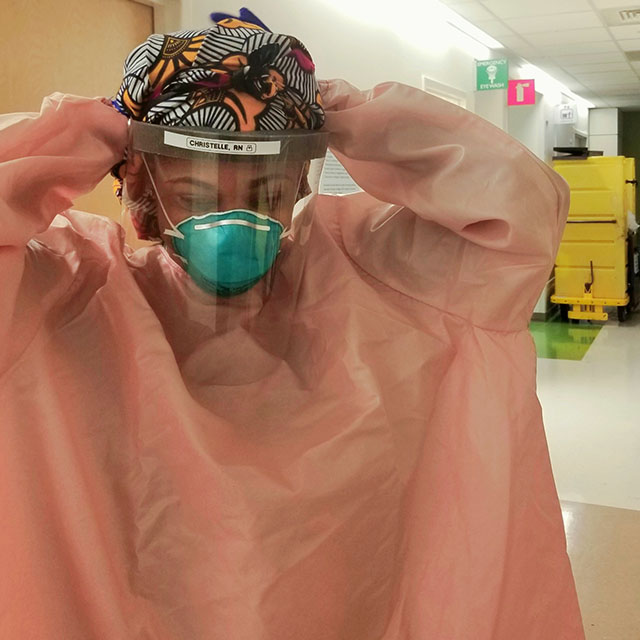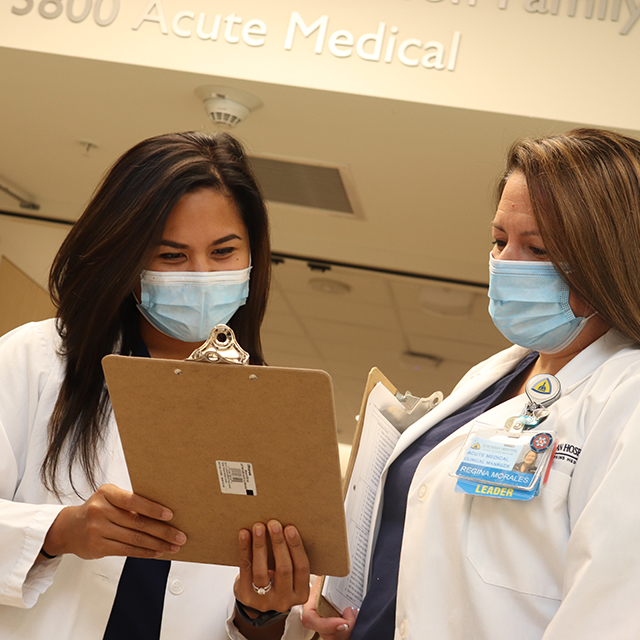When Emily Zerhusen gave birth to triplets in 2019, she wanted to breastfeed her 4-pound infants but didn’t know how.
Enter lactation specialists Alice Dawkins and Denise Perseghin.
“They assured me they’d be there every step of the way — and they were,” Zerhusen recalls.
Like many premature babies born in the neonatal intensive care unit (NICU), the triplets at first needed a feeding tube placed in their stomachs. Zerhusen’s breast milk was dripped via a cotton swab or dropper into a syringe and delivered directly into the tube.
For the first three days after giving birth, Zerhusen could only offer the babies colostrum — new mothers’ first antibody-rich secretion from the mammary glands. Then, when her milk came in, she says, “I was able to pump my breasts, using two electric pumps at a time on the unit, filling seven bottles.”
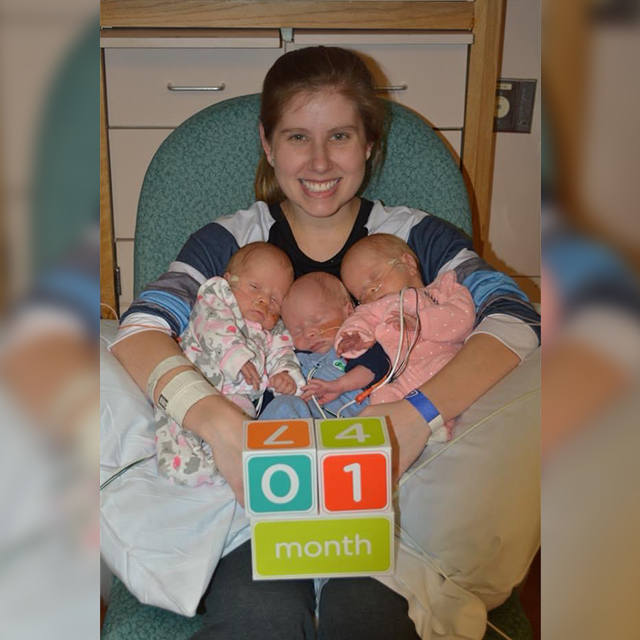
The photo above shows Emily Zerhusen and her triplets. Now two years old, “they’re running around like normal toddlers, have hearty appetites and love talking on the phone,” she says.
Many new mothers in the NICU don’t have the physical and emotional stamina to pump without help, says Perseghin. “It’s a daunting task,” she explains. “They need to pump every three hours, 24 hours a day. They’re recovering from delivery and balancing visiting their sick/premature babies. We teach the moms how to express the milk using the pumps and troubleshoot when they encounter a problem.”
An Empowering Award
In July of 2020, Dawkins and Perseghin were able to provide more support to new mothers who breastfeed. Their research project, NICU Babies Need Breast Milk, was awarded $14,500 from the Johns Hopkins Children’s Center. The Innovation Grant money covered the cost of 11 electric breast pumps for use in the hospital.
“We were thrilled to give three pumps to labor and delivery, four pumps to the postpartum unit and four pumps to remain in the NICU,” says Dawkins.
To date, more than 100 women who delivered babies in the NICU at Johns Hopkins Bayview Medical Center have used the new electric pumps. The money also covered the cost of four lower-tech pumps to send home with mothers who could not receive one through health insurance.
Dawkins and Perseghin are each an international board-certified lactation consultant, a title that requires 95 hours of clinical education courses, 1,000 hours of clinical practice experience in lactation and breastfeeding care, a clinical rotation and passing an international exam.
For more than three decades, the two registered nurses have worked together to ease new mothers’ concerns about breastfeeding and to educate them about breast milk’s antibodies, which are powerful enough to deter viruses and bacteria and to boost newborn immune systems. At the same time, these RNs show new moms in the NICU — as well as in the labor and delivery unit and in any other unit where lactating mothers are hospitalized — precisely how to pump breast milk for their babies and, ultimately, how to breastfeed them directly.
Drawing from Science, Training and Experience
“Breastfeeding offers lifelong health benefits,” says Perseghin, “including building the child’s immunity to contagions — something cow’s milk cannot do.”
Expressing breast milk from the outset also ensures that the milk supply is maintained until the baby is able to nurse, says Dawkins. One study, she notes, showed that new mothers who pumped during the first hour after giving birth produced more milk over time.
Both nurses consider their roles vital to improving NICU babies’ health. “Besides boosting immune systems, breast milk has many biological properties that support the newborn’s eyes and brain development,” says Dawkins.
For patients who don’t speak English, both nurses use a phone app with translation — as well as photos and videos — to help ensure that the new mothers understand how to position their babies and how to use the breast pump effectively.
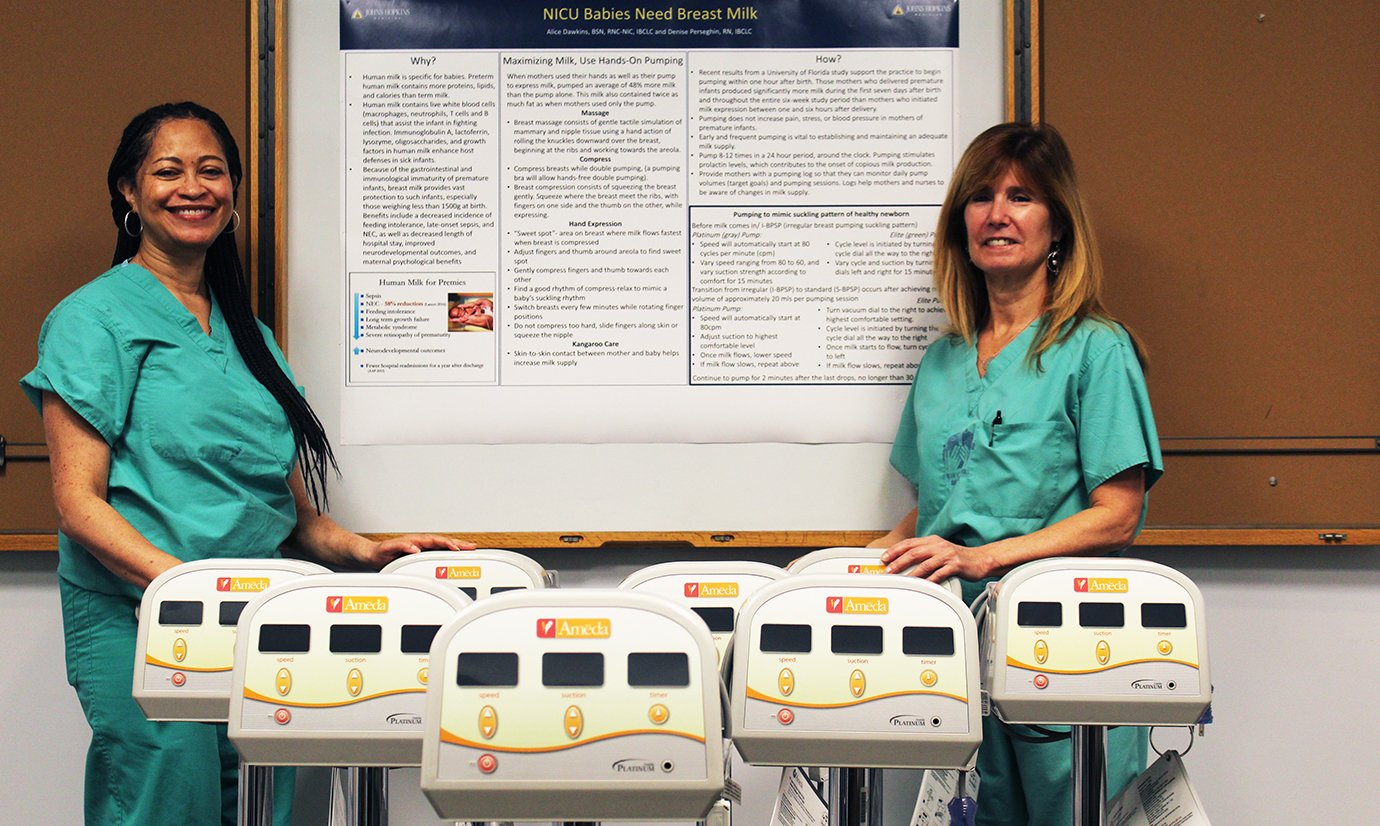
Grappling with New Challenges
Despite the availability of more electric pumps in the NICU, the pressure on new mothers during the pandemic can be overwhelming, says Dawkins, especially when childbirth occurs weeks or months ahead of the due date. Often, these babies have medical issues such as underdeveloped lungs or infections. In addition, because of COVID-19 restrictions, currently only one family member is allowed in the NICU.
“Parents rely on one another and their extended families so much to make it through the NICU experience,” says Dawkins. “Now, if both parents come to the hospital together, they must take turns visiting the baby while the partner waits in the car. For new parents of a NICU baby, dealing with the stress alone is especially difficult. They’re experiencing a crisis: First, the mom is often sick. She may have medical problems, such as high blood pressure, gestational diabetes, postpartum hemorrhage or any number of medical issues that affect breast milk production.
“These women need more support than just telling them to go ahead and pump. They need someone to help them set the pump up and show them how to use it to maximize milk production. And, once they can nurse directly, we need to ensure that the babies who are developed enough are actually latching on to the breast.”
Because of COVID-19-related concerns, Dawkins and Perseghin have been unable to conduct for other nurses their three-hour class about breast milk’s unique properties, how to use a breast pump, and how to massage the breasts to maximize milk production and keep up with the baby’s demand for it.
Still, they give advice to nurses and other staff members, as well as the new mothers, throughout the babies’ NICU stay. “Denise and I catch up regularly with the moms to see how they’re doing,” Dawkins says. “We ask each mom about their pumping and breast health. We want to make sure breastfeeding doesn’t become painful.”
For example, she says, nipple and breast size can change after giving birth. “They need ongoing assessment,” says Dawkins. “I want to be on top of a problem before it gets painful, before the milk decreases.”
“In the beginning, these young mothers are often sore, depressed and feeling a little crazy,” says Perseghin. “But when you see them with their babies five days later, successfully giving them their pumped breast milk — something that’s precious — and see their smiles, it’s amazing to be part of the process.”

